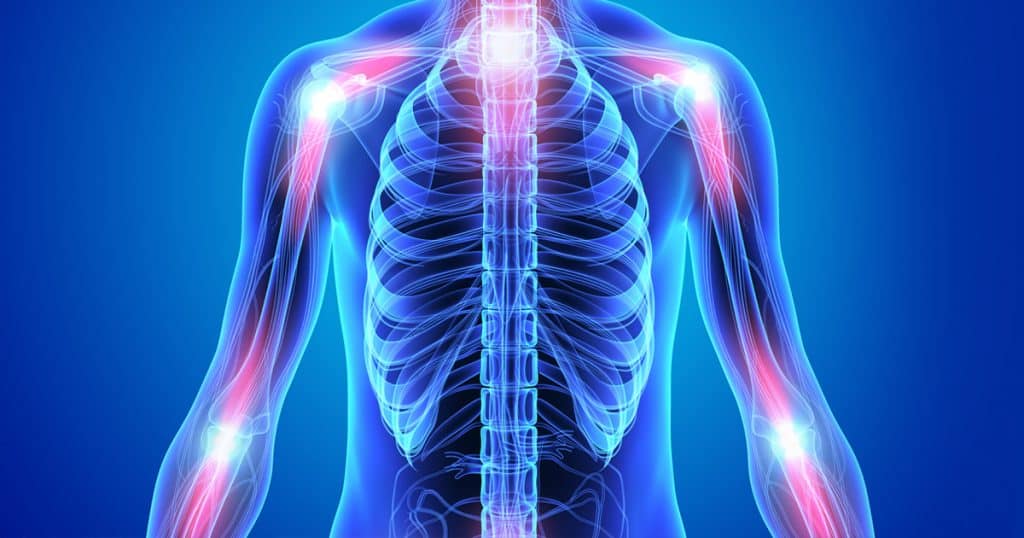What is thermography?

Thermography is also known as Digital Infrared Thermal Imaging. It measures the infrared waves (heat) emitted by your body and translate it into thermal images. Thermography detects areas of localized, increased temperature, which usually correlates with inflammation or tissue abnormalities. Those areas can be viewed as “hot spots” of existing or potential problems. To put it simply, if an area of your body starts to get “hot”, it’s going to do so at a very early stage in the disease or injury process. This gives you an early warning and head-start to further investigate changes in your body and eliminate the sources of inflammation.
Since there is a high degree of thermal symmetry in the normal body, subtle abnormal temperature asymmetries can be easily identified. In healthy people there is a symmetrical thermal pattern that is consistent and reproducible for that individual. Thermography measures temperature and compares symmetry or asymmetry as it pertains to the right and left side of the body. Injury or disease will result in thermal asymmetries.
Thermography has been in use for years
You may be wondering why you have never heard of thermography. Thermography has a long history. Breast thermography was discovered in 1956 in Montreal, Canada and rapidly became popular throughout the world. It was FDA cleared and then certified by the American Medical Association as an adjunctive screening procedure for breast cancer in 1982. Recent advancements in technology have allowed us to perform even more accurate exams. A 2008 study published in The American Journal of Surgery, performed at New York Presbyterian Hospital Cornell, showed a 97% sensitivity in discriminating breast cancer compared to biopsy.
Although medical thermography has been around for several decades, it is only now gaining and credit it deserves from the medical establishment. However, more and more patients are becoming aware of this amazing technology – with no radiation, no pain, and no body contact – and it’s not unusual that the patient is the one who ends up informing their physician about thermography.
Inflammation is the root of most – or even all – chronic diseases
In addition to an optimal diet, keeping the bodys flow systems functioning is the key to reducing inflammation and disease in our bodys ecosystem. If our flow systems are stagnant, we will be holding on to “pond” water – microbial and metabolic waste overgrowth. Movement will keep our systems flowing and breakdown all of our body’s chemical reactions whether it be nutrients, hormones, microbes, or metabolic wastes (just to name a few). The terrain of our body requires motion and flow- just like the ecosystem of our earth. Stagnation equals overgrowth of pond water which equals inflammation which equals the onset of disease.
What does thermography have to do with your thyroid?
Many times thyroid issues will link back to poor digestion based on the chemistry of HCL (stomach acid) and digestive enzymes. Another consideration, which is rarely mentioned, is blockage or slow moving flow systems due to muscular spasms/tension patterns in the head, neck, and shoulders. Muscular tension is pressure that can slow down lymphatic flow, circulation, and nerve messaging. All of which are important and necessary for the thyroid and everything else in the head and neck and below. Many times Thermography will show an enlarged thyroid or nodules before any blood test will have hormonal markers. So often one body part is targeted as an issue when actually, assessing the flow systems is the best way to open the entire body up for cleansing, support, and healing.
Lymphatic flow drains our toxins and wastes. Blood carries our nutrients and oxygen to the area as nerve flow sends messages. Imagine if your thyroid didn’t quite get the message from the nervous system to help it function optimally. It’s like a cellphone getting poor service. Keeping the head, neck, shoulders relaxed and moving is important as tension patterns will cause more than a tight feeling in your neck.
Restore your thyroid flow
Thermography as an assessment tool has been very rewarding for me personally and for my patients. As an advocate for self-care I am always very pleased to see the differences in the thermal imaging reports once the baseline is completed. It has proven that taking the time to care for yourself is a major benefit for overall health. This is one of the major benefits of thermography- seeing the inflammatory pathways and the response your body has to self-care.
For more information on Thyroid assessment using Thermography and Full Thyroid Screening Blood Test including : Anti Thyroglobulin Abs, Anti Thyroperoxidase (TPO) Abs, Free T3 Free T4 ratio, Reverse T3, Total T3, Total T4. TSH contatc the clinic @ info@thermographyireland.ie or Ph: 086 1623683


















